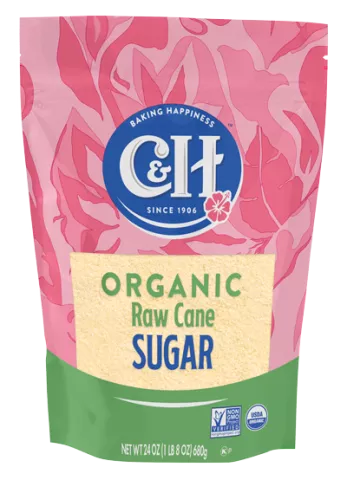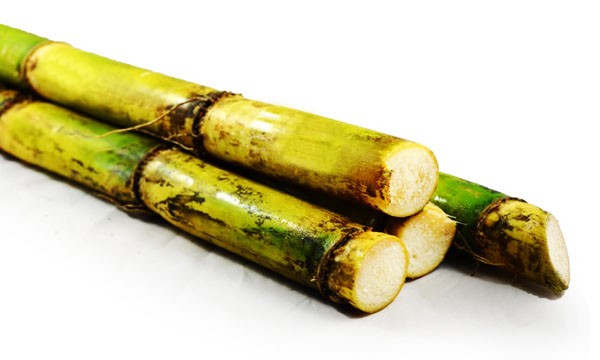Advanced Cane Sugar Processing: Enhancing Efficiency and Sustainability
Wiki Article
Understanding the Essential Techniques and Technologies Utilized in Modern Walking Cane Sugar Handling
The advancement of walking cane sugar handling has actually been considerably shaped by the combination of advanced techniques and modern technologies that address both effectiveness and sustainability. As we explore these critical improvements, it becomes crucial to examine just how they not just improve production yet likewise straighten with broader industry fads and customer demands, increasing inquiries about the future of sugar processing and its implications for worldwide markets.Historic Context of Walking Cane Sugar Processing
The historic context of walking stick sugar handling exposes an abundant tapestry of agricultural advancement and social exchange that has formed its growth over centuries. Originating in Southeast Asia, sugarcane was grown as early as 8000 BCE - Cane Sugar Processing. The process of drawing out and refining sugar acquired energy in India, where methods for formation were refined around the sixth century. This understanding passed through to the Middle East, and by the 12th century, sugar became a valued commodity in Europe, resulting in the facility of sugar plantations in the Mediterranean.
Advanced Extraction Methods
Performance in walking cane sugar removal has seen substantial advancements, driven by the requirement for higher returns and reduced production prices. Typical methods have developed, offering means to ingenious modern technologies that enhance the efficacy of the removal procedure. One notable innovation is using enzyme-assisted removal, wherein details enzymes break down cell wall surfaces and launch more sucrose from the walking stick fibers. This strategy not just raises sugar return but likewise decreases the energy needed for processing.Furthermore, the adoption of membrane purification technologies, such as nanofiltration and turn around osmosis, has transformed the separation of sugar from impurities. These methods permit the discerning permeation of sugar molecules while preserving larger impurities, simplifying the removal process and lessening waste.
Moreover, the integration of continual removal systems has actually led to improved operational effectiveness. Cane Sugar Processing. These systems preserve a constant flow of walking stick product, making sure optimum removal conditions and decreasing downtime connected with batch processing
Cutting-edge Refining Technologies
Refining methods in cane sugar handling have undergone a transformative shift, driven by the need for higher pureness and improved product high quality. One of one of the most remarkable developments is the adoption of membrane filtering modern technologies, such as ultrafiltration and nanofiltration. These procedures effectively get rid of impurities and colorants without the requirement for considerable chemical treatments, therefore Learn More Here protecting the sugar's natural taste and enhancing its charm.Another substantial advancement is making use of ion exchange resins, which permit careful elimination of undesirable ions from sugar solutions. This technology not only boosts the general pureness of the end product but additionally adds to lowered waste and environmental impact.
Furthermore, innovations in adsorption methods, making use of turned on carbon and other innovative materials, have proven effective in decolorizing sugar remedies while keeping optimal top quality. The integration of these innovative refining technologies makes certain that manufacturers can generate polished sugar with superior clarity and preference, satisfying the evolving choices of customers.
Automation and Control Systems
Recent improvements in refining technologies have paved the method for substantial renovations in automation and control systems within cane sugar handling facilities. These systems utilize sophisticated software application and hardware to enhance operational effectiveness, reduce human mistake, and ensure consistent item quality.Modern automation integrates various components, including sensing units, actuators, and programmable reasoning controllers (PLCs), allowing real-time surveillance and control of important procedures. For instance, circulation, stress, and temperature level prices can be precisely controlled throughout removal, information, and condensation phases, enhancing performance and minimizing waste.
Additionally, progressed data analytics and device knowing formulas play an essential duty in anticipating maintenance, allowing drivers to prepare for equipment failures prior to they happen. This aggressive method not just lowers downtime but additionally expands the life expectancy of machinery.
In enhancement, automation facilitates the implementation of Industry 4.0 principles, encouraging sugar mills to accomplish higher connectivity and information exchange across processes. Because of this, decision-making becomes even more informed and dexterous, inevitably enhancing the general competition of cane sugar production. With these improvements, the sector is well-positioned to satisfy expanding worldwide needs while preserving operational quality.
Sustainability Practices in Sugar Production
Sustainability techniques in sugar manufacturing have actually come to be increasingly vital as the market seeks to balance economic feasibility with environmental responsibility. As customer awareness expands regarding the environmental impacts of farming practices, sugar producers are embracing cutting-edge methods to reduce their ecological footprint.One considerable approach is the implementation of accuracy agriculture methods, which use data analytics to maximize resource usage, such as water and plant foods. This lowers waste and minimizes the influence on neighborhood ecosystems. In addition, many producers are transitioning to renewable resource sources, such as biomass from sugarcane by-products, to power their procedures, therefore reducing dependence on fossil gas.
Water administration methods are additionally vital; rainwater harvesting and reliable watering systems help reduce water deficiency concerns. Cane Sugar Processing. In read review addition, incorporated parasite management methods decrease chemical use, advertising biodiversity and soil wellness
Business social responsibility initiatives are arising, with firms purchasing regional areas and guaranteeing fair labor techniques. By embracing these sustainability methods, the sugar sector not only boosts its credibility yet also adds to a much more sustainable agricultural landscape, leading the way for future generations.

Conclusion
In summary, contemporary cane sugar handling incorporates a series of sophisticated strategies and technologies that significantly enhance sustainability, yield, and effectiveness. The adoption of ingenious removal and refining approaches, together with automation and control systems, promotes enhanced operational performance and item quality. In addition, the emphasis on lasting techniques underscores a commitment to minimizing environmental impact and promoting moral production. Jointly, these improvements place the walking cane sugar industry to meet contemporary demands while attending to critical international obstacles.The development of walking cane sugar processing has been considerably formed by the combination of innovative methods and technologies that deal with both performance and sustainability.The historical context of walking cane sugar processing exposes a rich tapestry of farming advancement and cultural exchange that has actually formed its growth over centuries. Advancements in milling and refining emerged, laying the groundwork for modern-day walking cane sugar processing.Refining strategies in cane sugar processing have undergone a transformative shift, driven by the need for higher pureness and boosted item high quality.In summary, modern-day cane sugar handling integrates a variety of advanced strategies and more tips here technologies that considerably enhance efficiency, yield, and sustainability.
Report this wiki page